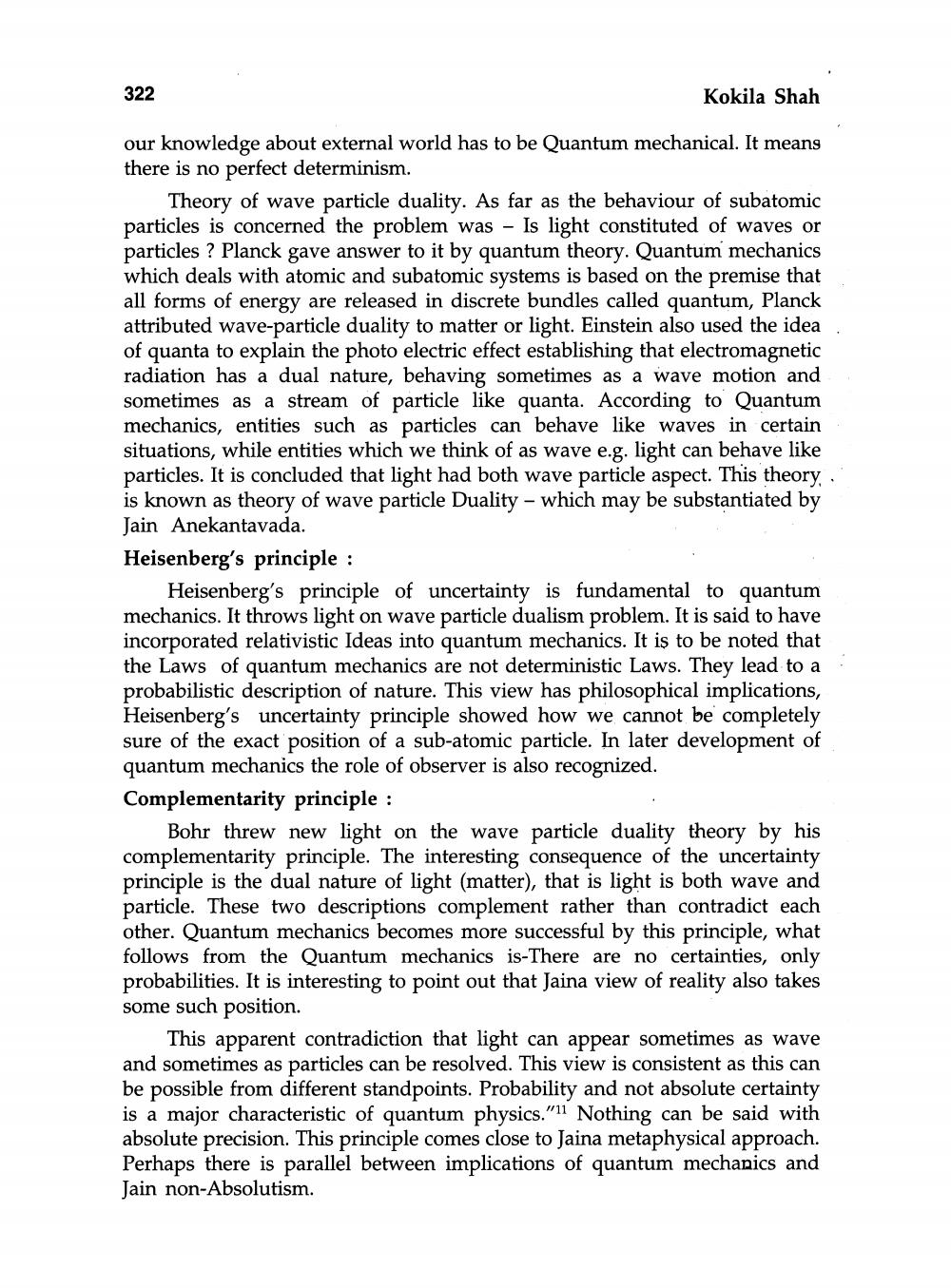________________
322
Kokila Shah
our knowledge about external world has to be Quantum mechanical. It means there is no perfect determinism.
Theory of wave particle duality. As far as the behaviour of subatomic particles is concerned the problem was - Is light constituted of waves or particles ? Planck gave answer to it by quantum theory. Quantum mechanics which deals with atomic and subatomic systems is based on the premise that all forms of energy are released in discrete bundles called quantum, Planck attributed wave-particle duality to matter or light. Einstein also used the idea of quanta to explain the photo electric effect establishing that electromagnetic radiation has a dual nature, behaving sometimes as a wave motion and sometimes as a stream of particle like quanta. According to Quantum mechanics, entities such as particles can behave like waves in certain situations, while entities which we think of as wave e.g. light can behave like particles. It is concluded that light had both wave particle aspect. This theory, is known as theory of wave particle Duality - which may be substantiated by Jain Anekantavada. Heisenberg's principle :
Heisenberg's principle of uncertainty is fundamental to quantum mechanics. It throws light on wave particle dualism problem. It is said to have incorporated relativistic Ideas into quantum mechanics. It is to be noted that the Laws of quantum mechanics are not deterministic Laws. They lead to a probabilistic description of nature. This view has philosophical implications, Heisenberg's uncertainty principle showed how we cannot be completely sure of the exact position of a sub-atomic particle. In later development of quantum mechanics the role of observer is also recognized. Complementarity principle :
Bohr threw new light on the wave particle duality theory by his complementarity principle. The interesting consequence of the uncertainty principle is the dual nature of light (matter), that is light is both wave and particle. These two descriptions complement rather than contradict each other. Quantum mechanics becomes more successful by this principle, what follows from the Quantum mechanics is-There are no certainties, only probabilities. It is interesting to point out that Jaina view of reality also takes some such position.
This apparent contradiction that light can appear sometimes as wave and sometimes as particles can be resolved. This view is consistent as this can be possible from different standpoints. Probability and not absolute certainty is a major characteristic of quantum physics."11 Nothing can be said with absolute precision. This principle comes close to Jaina metaphysical approach. Perhaps there is parallel between implications of quantum mechanics and Jain non-Absolutism.




